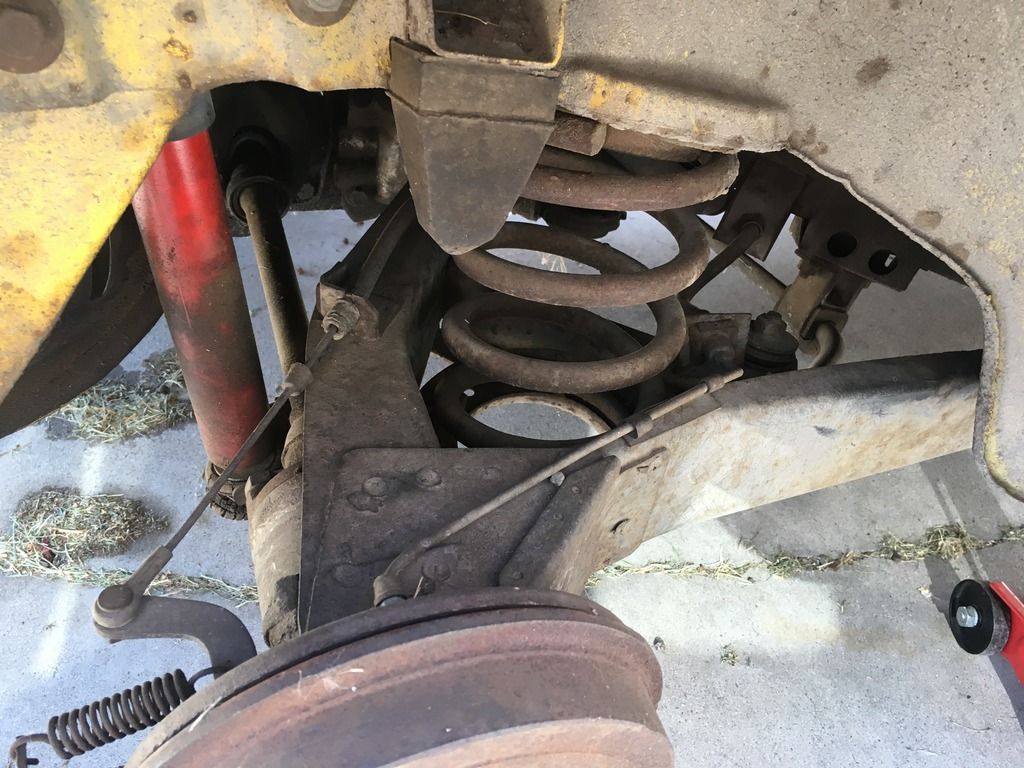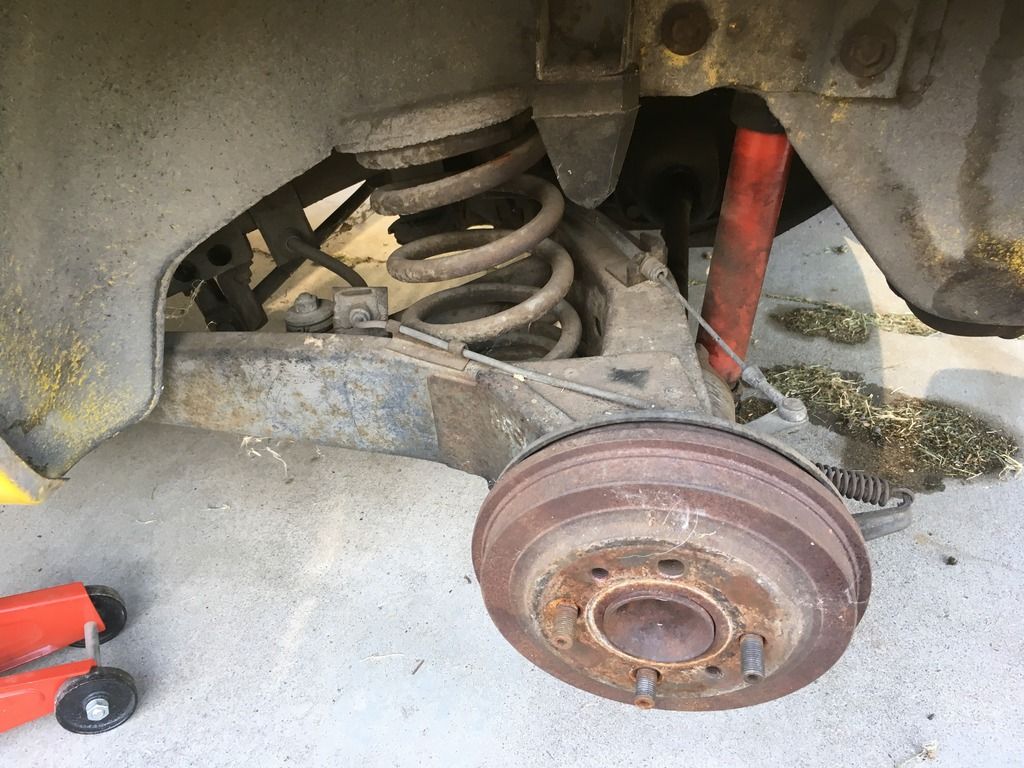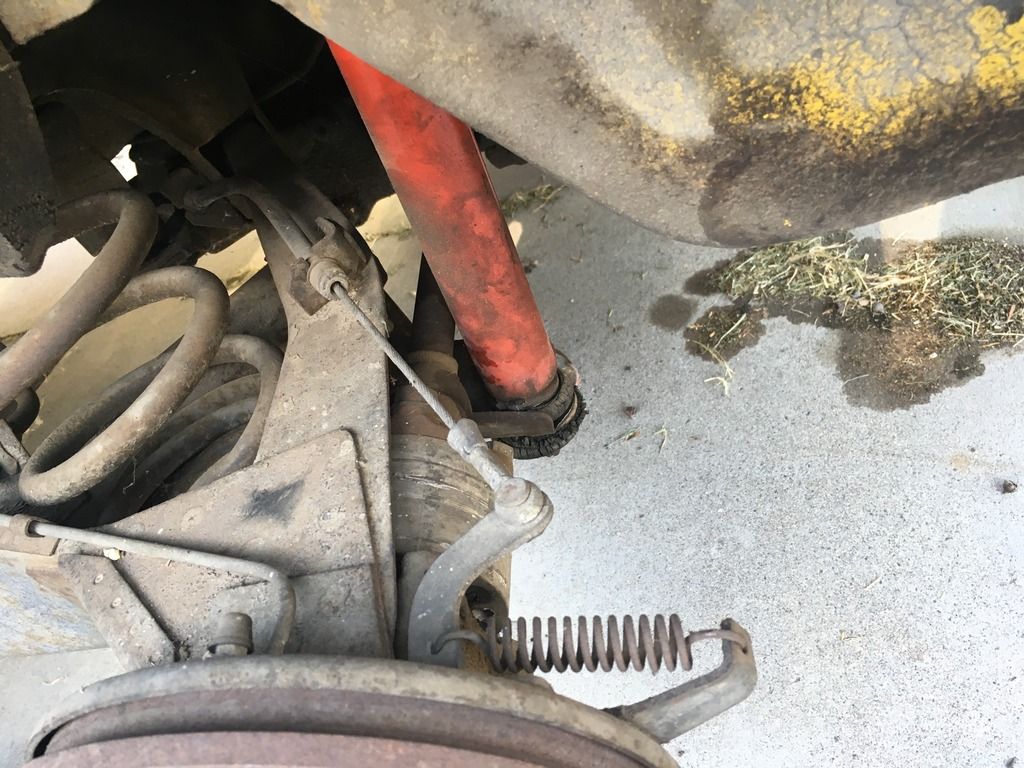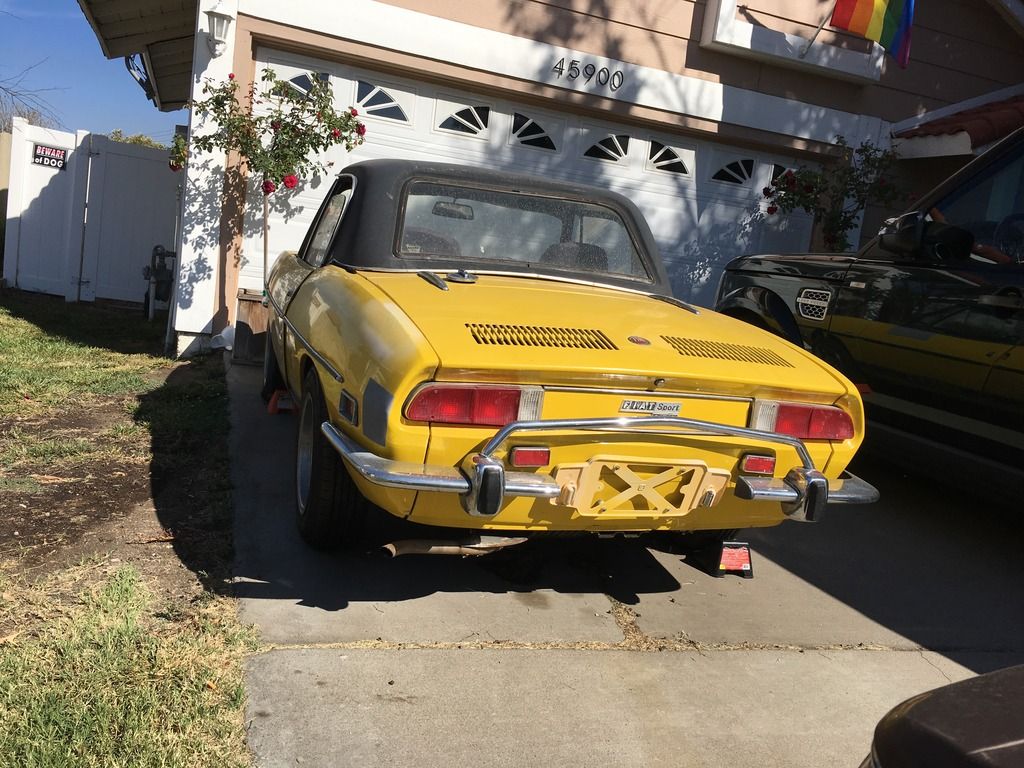This week I replaced the tires on the rear. After lifting the car and swapping the tires, it's less pronounced but still not level. Couldn't see any rust-through but I am wondering if the driver's side lower shock mount point is bent. What say the hive mind?
Lower shock mounting points look ok to me, but your lower shock
bushings are complete crap - replace them, they're cheap & easy to do (4 rubber donuts, 2 per side). Your passenger-side inner axle boot appears to have spit out the axle seal/holder assembly, as well?
Definitely want to fix that before driving the car any further.
Besides the sagging-spring scenario, some other possible causes for the rear not sitting level (side-to-side) might be:
- Missing or trashed upper coil spring mount - (ribbed rubber insert with metal surround).
- Ill-fitting coil spring & upper mount union (improperly "clocked" upper mount, so the end/tip of the coil isn't situated into the upper mount correctly). This would cause that particular side of the car to sit higher than normal.
- Ill-fitting coil spring & lower mount union (improperly "clocked" coil spring, so the end/tip of the coil isn't correctly situated into the center of the swing arm - there's a vertical metal tab in there to keep the spring from rotating. Some people ignore it & just jam the spring in there on top of that tab). This would also cause that particular side of the car to sit higher than normal.
- Non-stock (or modified/hacked) coil spring on one side of the car.
Can you post a photo or two of the rear of your car showing the unbalanced stance you're seeing?




